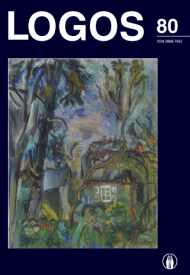Tarp Pasaulio Tylos Ir Tuštumos
Between the Silence of the World and Emptiness
Author(s): Algis MickunasSubject(s): Review, Visual Arts, Aesthetics, East Asian Philosophy, Phenomenology
Published by: Visuomeninė organizacija »LOGOS«
Keywords: emptiness; word; phenomenology; Daoism; visual arts;
Summary/Abstract: The review of: „The Phenomen of Emptiness. – Spread of Emptiness in Daoism, Phenomenological Philosophy, Chinese and Western Aesthetic and Art“ by Agnieška Juzefovič; Vilnius: Technika, 2014. p. – 272 p. ISBN 978-609-457-479-5 The notice contains the review of the monograph by Agnieška Juzefovič The Phenomen of Emptiness. Spread of Emptiness in Daoism, Phenomenological Philosophy, Chinese and Western Aesthetic and Art. The reviewed book is an excellent example of comparing civilizations in the context of arts – specifically the visual arts of two distinct trends of thought: Phenomenology and Daoism. The author manages to link two very distinct traditions and historical periods by way of disclosing a common phenomenon – that of emptiness – and its diverse readings, forming a unique logic of sameness and difference. While the comparisons are complex, involving methodological and even theoretical debates, one thing is clear: the text presents the phenomenon of emptiness and the artistic diversity of the two traditions and unfolds an appropriate method suggested by the visual arts and their theoretical components. In this sense, there is no a priori imposition of one tradition on another that would be counter to fruitful investigation. The author is specifically keen to maintain that emptiness is not some sort of metaphysical postulate which „explains“ all events and their artistic depictions; rather, the artistic depictions yield the all pervasive presence of emptiness in the arts and theories both of Daoism and phenomenology. It is made clear that the latter has done a credible job in showing that the very horizon of any given thing, action, pronouncement is structured mostly by empty or unfulfilled possibilities. It is to the credit of the author that she does not overstate her case by hastily transgressing the subject matter of her investigations. In this sense, the text is groundbreaking and most revealing the contact between two distinct civilizations. Obviously, there are numerous suggestions for further research which – we hope – the author will pursue.
Journal: LOGOS - A Journal of Religion, Philosophy, Comparative Cultural Studies and Art
- Issue Year: 2014
- Issue No: 80
- Page Range: 219-222
- Page Count: 4
- Language: Lithuanian

